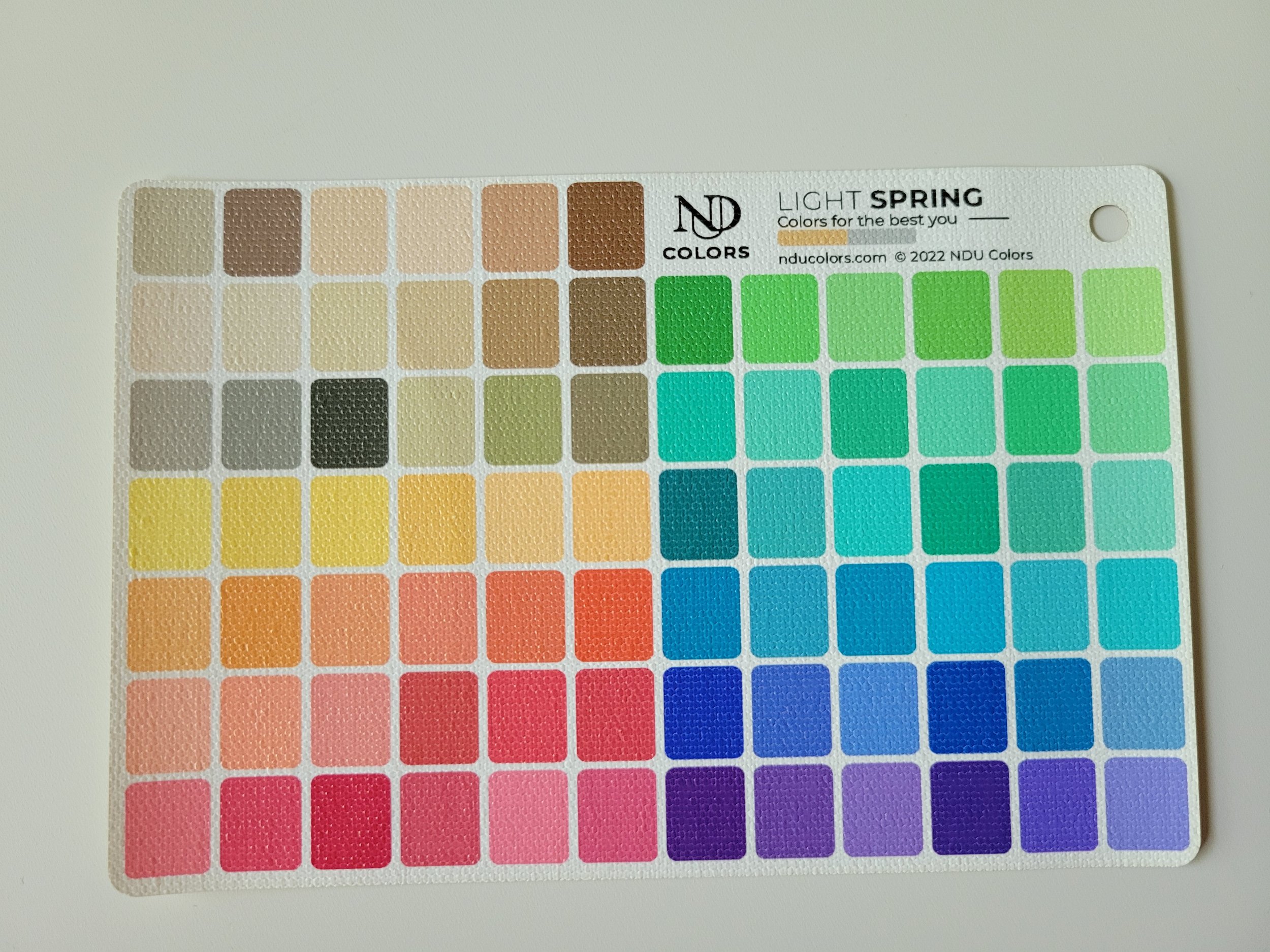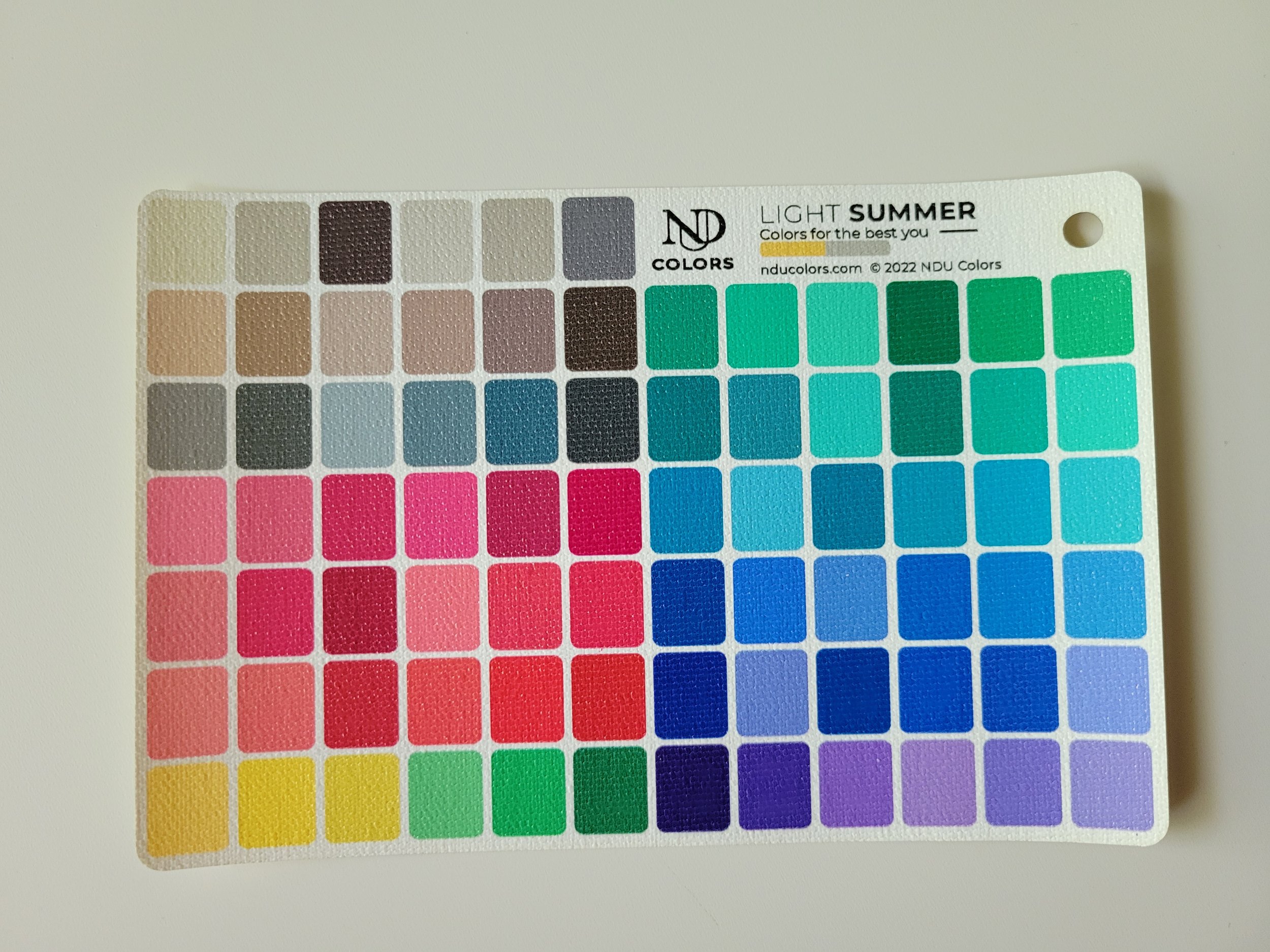Light Spring and Light Summer are another highly-requested seasonal combination, and I can see why! While the Lights don’t get as much attention online as other seasons do, their palettes are just as important, and can be no less confusing.
First, let’s explore their technical parameters:
Light Spring and Light Summer are situated between True Spring and True Summer on the seasonal color clock, meaning that they’re both blends of True Spring (warm, saturated, medium contrast) and True Summer (cool, muted, medium. contrast).
Light Spring has a base of True Spring, with a dash of True Summer’s coolness and softness. Light Spring is a Warm-Neutral season. Colors are fresh and juicy, and color descriptions and keywords often evoke food or warm locales, with words like honeydew, peach, coral, and sand.
Light Summer has a base of True Summer, with a dash of True Spring’s brightness and warmth. Light Summer is a Cool-Neutral season. Colors are fresh and serene, and color descriptions and keywords often evoke flowers and beaches, with words like aqua, periwinkle, rose, and lilac.
In the Sci/Art system, it’s important to note that there is no purely neutral season made up of 50/50 warm and cool colors. The seasons we refer to as Neutral are still either more warm or more cool. This term distinguishes them from the True seasons, which are comprised of purely warm or cool colors.
It’s also important to remember that “Light” and “Soft” are not synonymous terms! Light season people need brightness and vivacity in their colors, although not as much as their Bright counterparts. Very muted colors, like we see in the Soft seasons, are too dusky for the Lights.
Lightness is the most important characteristic of Light Spring and Light Summer. While Light season people don’t necessarily look lighter than everyone else (though they can), they’re enhanced by lighter, brighter colors in makeup and clothing. They are easily dragged down by colors that feel too heavy or dark.
What happens when a Light Spring wears Light Summer colors, and vice versa?
Too-cool colors can turn Light Spring skin ashy, or lips slightly blue. There may be an impression of dry/flaky skin, or shadowing from the relative darkness and coolness of Light Summer.
Too-warm colors can turn Light Summer skin more yellow than it naturally is, or lips slightly orange. There may be an impression of overly shiny skin, or an ungrounded feeling of “floating” in the relative lightness and warmth of Light Spring.
How do these two seasons wear their makeup?
Light Spring will go for an overall warmer and juicier look. Eyeshadows like MAC Orb and Stila Kitten are at home here, along with eyeliners like Clinique True Khaki. For cheeks, peach and melon shades like Benefit GALifornia or NARS Luster are beautiful. And for lips, light coral pinks like Bobbi Brown Guava, NARS Niagara, or 12 Blueprints Honey Mandarin.
Light Summer will go for an overall cooler and rosier look. Eyeshadows like MAC Yogurt and Laura Mercier Sable are at home here, along with eyeliners like Clinique Blue Gray. For cheeks, fresh petal pinks like Surratt Tu Me Fais Rougir or Tarte Dollface. And for lips, light raspberry pinks like Dior Be Dior, Tarte Pink Peony, or 12 Blueprints Come Dancing.
Both of these seasons are enhanced by makeup with translucent or somewhat dewy finishes, including cream blush, highlighter, lipgloss, and/or shimmer shadows. Light Summer may err on the side of a more petal-matte skin finish, while Light Spring can get away with more shine.
Can these two seasons “cheat” with some of the same colors?
Technically speaking, colors belong to one palette or the other, and people will be most enhanced and magical in their own season. But in real life, a Light Spring may occasionally wear a Light Summer sky blue, or a Light Summer may reach for a Light Spring coral without feeling the effect too terribly. The success of this can depend on the size of the piece (an earring vs a sweater vs a shoe), where on the body the color is worn, and the individual in question. These two seasons do share some makeup successfully, particularly in ivory and taupe eyeshadows, and in lipsticks on the cooler coral spectrum.
If you’d like to explore these two seasons further, check out my Pinterest boards:

